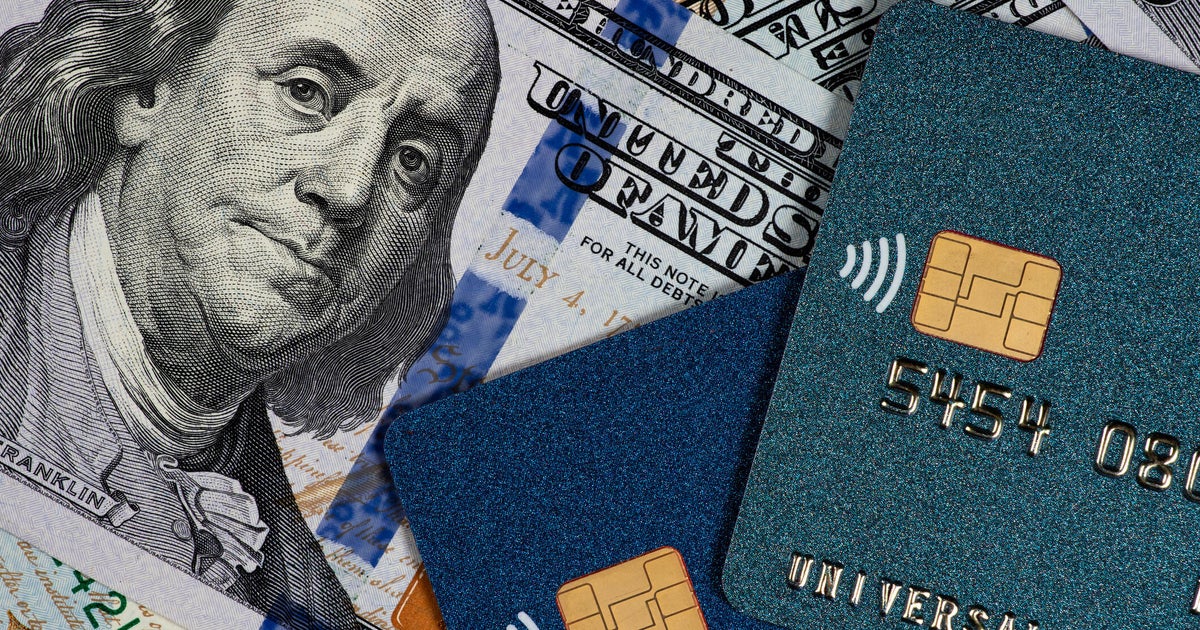Here's how much credit card debt costs this fall
If you're trying to pay off your credit card debt, you're likely aware that this type of debt has gotten a lot more expensive over the last couple of years. One issue is that interest rates have been climbing with the average credit card rate now hovering near 23%. Inflation has also had a big impact on how far your paycheck will stretch, so as the economic pressures mount, you may be struggling to keep up with the cost of your high-rate card debt.
At its core, credit card debt is expensive because of compound interest — the process by which interest is calculated not just on the principal balance, but also on accumulated interest from previous periods. Credit card interest charges alone can turn a manageable sum into an overwhelming financial burden in a matter of months. High interest rates simply exacerbate this issue, making it easy for this type of debt to spiral out of control.
The structure of credit card payments is also designed to keep consumers in debt for extended periods. The minimum payments often cover little more than the interest accrued, leaving the principal balance largely untouched and making your card debt even more costly. But how much does your credit card debt cost this fall? Below, we'll explain what you should know.
Don't let your credit card debt compound. Tackle it now with the help of a debt relief expert.
How much does credit card debt cost this fall?
The average cardholder is carrying about $8,000 in credit card debt currently, and the credit card interest rate currently stands at 22.76% — a record high. This high rate translates into significant costs for those carrying balances on their credit cards.
Let's break down the costs for various debt amounts for different minimum payment structures:
$8,000 in credit card debt
1% of the balance plus interest:
- Monthly payment: Starts at $233.33 and decreases over time
- Total interest paid: $14,679.29
- Time to pay off: About 330 months
2.5% of your balance
- Monthly payment: Starts at $200 and decreases over time
- Total interest paid: $24,863.15
- Time to pay off: About 520 months
5% of the balance
- Monthly payment: Starts at $400 and decreases over time
- Total interest paid: $4,868.44
- Time to pay off: About 131 months
$10,000 in credit card debt
1% of the balance plus interest:
- Monthly payment: Starts at $291.67 and decreases over time
- Total interest paid: $18,512.11
- Time to pay off: About 352 months
2.5% of your balance
- Monthly payment: Starts at $250 and decreases over time
- Total interest paid: $31,435.33
- Time to pay off: About 558 months
5% of the balance
- Monthly payment: Starts at $500 and decreases over time
- Total interest paid: $6,111.59
- Time to pay off: About 138 months
$15,000 in credit card debt
1% of the balance plus interest
- Monthly payment: Starts at $437.50 and decreases over time
- Total interest paid: $28,095.54
- Time to pay off: About 392 months
2.5% of your balance
- Monthly payment: Starts at $375 and decreases over time
- Total interest paid: $47,863.51
- Time to pay off: About 627 months
5% of the balance
- Monthly payment: Starts at $750 and decreases over time
- Total interest paid: $9,219.91
- Time to pay off: About 151 months
These calculations assume that no additional charges are made to the card and that the stated minimum payments are made each month. It's crucial to note that making only minimum payments, especially at the 1% or 2.5% level, can extend the repayment period significantly, potentially more than doubling the original borrowed amount over time.
Explore the credit card debt relief options that could help you here.
How to reduce your credit card debt costs
There are several strategies you can use to help reduce the cost of credit card debt:
- Debt consolidation: Consolidating your debt involves taking out a new loan to pay off multiple credit card debts. The new loan typically has a lower interest rate, which can save you money over time.
- Balance transfer: Many credit cards offer promotional 0% APR periods on balance transfers. By transferring high-interest debt to this type of card you can avoid interest charges for a set period, typically 12-18 months. That can provide significant savings and help you pay down the principal faster.
- Debt settlement: This strategy involves negotiating with creditors to pay less than what you owe, typically with the help of a debt relief company. If successful, this strategy can reduce your overall debt, lowering it by 30% to 50% on average.
- Debt management: With a debt management plan, the credit counselor you work with may help with negotiating lower interest rates with your creditors and creating a structured repayment plan. Lowering your interest rate could result in significant savings on interest over time.
The bottom line
Given today's high average credit card rate, any balance you carry from month to month is likely costing you a lot of money in interest. And, those costs can grow over time as the charges compound, so it's important to try and tackle what you owe as soon as possible. Otherwise, you could find yourself in serious financial trouble as your credit card debt obligations grow — making it even more difficult to get your finances back on track.






